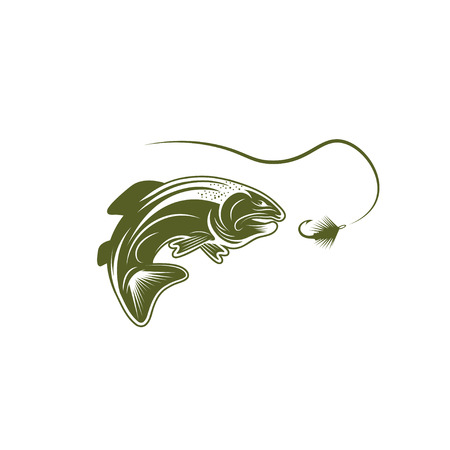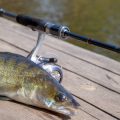Introduction to Territorial Behavior in Sport Fish
Understanding territorial behavior in bass and other aggressive sport fish is crucial for anglers who want to improve their catch rates and enjoy more productive days on the water. Territoriality refers to the instinctive actions these fish take to claim, defend, and patrol specific areas within their habitat. For popular game species like largemouth and smallmouth bass, as well as northern pike and certain sunfish, this behavior shapes how they interact with each other, respond to threats, and—most importantly for anglers—how they react to lures or bait encroaching on their territory. By exploring the basics of territoriality, we can see why knowing when and where these fish are most defensive helps anglers make smarter choices about lure presentation, timing, and location. The table below highlights key traits of territorial sport fish commonly targeted by American anglers.
| Species | Territorial Triggers | Prime Territory | Aggression Level |
|---|---|---|---|
| Largemouth Bass | Nesting season, food competition | Weed beds, submerged structure | High during spawn |
| Smallmouth Bass | Breeding season, intruders | Rocky bottoms, ledges | Very high near nests |
| Northern Pike | Feeding zones, ambush points | Shallow bays, weed lines | Consistently aggressive |
| Bluegill/Sunfish | Nesting grounds, fry protection | Sandy flats, shallow water | Moderate to high in spring/summer |
This foundational knowledge sets the stage for understanding how and why these species protect their territory, which directly affects angler tactics throughout the fishing season.
2. Recognizing Territorial Zones in the Wild
Identifying territorial zones is a crucial step for anglers targeting bass and other aggressive fish species across American lakes and rivers. Fish establish territories based on environmental features that offer security, feeding opportunities, and breeding grounds. By learning to spot these likely zones, you can significantly improve your catch rates. Below are key factors and tips to help you recognize these areas effectively.
Understanding Cover and Structure
Cover refers to physical objects in the water such as rocks, fallen trees, docks, weed beds, or brush piles that provide shelter from predators and strong currents. Structure, on the other hand, includes changes in the underwater landscape like drop-offs, points, channels, and humps. Both cover and structure are vital when locating territorial zones because bass and similar species use them for ambush points, nesting sites, and daily protection.
| Type | Examples | Why It Attracts Bass |
|---|---|---|
| Cover | Submerged logs, lily pads, boat docks | Shelter from predators; hiding spots for ambush |
| Structure | Rocky points, creek channels, drop-offs | Nesting locations; access to deeper or shallow water quickly |
Seasonal Changes and Their Impact
Bass behavior shifts throughout the year as water temperature and daylight hours change. In spring, spawning season draws bass into shallow flats with sandy or gravel bottoms where they establish nests. During summer’s heat, territorial zones often move deeper to cooler waters near submerged structures or shaded cover. Fall sees bass chasing baitfish along creek mouths and points, while winter pushes them toward deeper pockets with stable temperatures. Understanding these seasonal movements is key to predicting where territorial fish are most active.
Tips for Spotting Territorial Zones Year-Round
- Spring: Focus on protected coves and flats near spawning areas.
- Summer: Target deep ledges, main lake points, and thick vegetation.
- Fall: Look for schooling activity near creek mouths or wind-blown banks.
- Winter: Seek out deep holes with nearby structure for warmth and shelter.
Putting It All Together on the Water
Keen observation combined with local knowledge will help you consistently identify territorial hotspots. Scan for visible cover above water—like overhanging trees or dock pilings—and use electronics to find hidden structure below the surface. Pay attention to how bass react to seasonal patterns in your area; this localized approach is what separates successful anglers from the rest. Remember, every body of water has its own unique mix of cover, structure, and seasonal quirks—so keep exploring until you crack the code!

3. How Bass and Other Species Defend Their Territory
When it comes to defending their turf, bass and other aggressive freshwater species like northern pike and muskellunge display a fascinating range of behaviors. Understanding these patterns can help anglers better predict fish movements and increase their catch rates. Each species has developed unique tactics and aggression signals that signal their intent to defend their space against intruders, whether those intruders are rivals or unsuspecting prey.
Typical Territorial Behaviors
Bass, especially largemouths and smallmouths, are known for staking out prime real estate in lakes and rivers—think submerged logs, dock pilings, or weed beds. They use specific posturing, such as flaring their gill covers and spreading fins wide, to look larger and more intimidating. Pike, on the other hand, rely heavily on ambush tactics, lurking motionless until a threat or opportunity enters their strike zone.
Aggression Signals You Should Know
| Species | Aggression Signal | Description |
|---|---|---|
| Largemouth Bass | Gill Flare & Lateral Display | Spreads fins and flares gills to appear larger; may nudge or charge at intruders. |
| Smallmouth Bass | Mouth Opening & Body Quiver | Opens mouth wide and quivers body to intimidate rivals or threats. |
| Northern Pike | Sudden Burst Strike | Remains still, then explodes with speed toward perceived invaders or prey. |
| Muskellunge (Muskie) | S-curve Posture & Tail Slap | Bends body into an S-shape as warning; may slap water with tail to startle rivals. |
Tactics Used in Defense
Bass typically patrol the edges of their claimed area, launching short chases or quick charges at anything that comes too close. If faced with persistent threats, they may escalate to direct confrontation—biting or ramming the intruder. Pike and muskie use stealth as their primary defense, but when provoked, they deliver lightning-fast strikes designed to injure or dissuade invaders.
Recognizing these signals not only helps anglers avoid spooking fish but also reveals when a fish is likely to strike out of aggression rather than hunger. For example, seeing a bass flare its gills near your lure could mean you’re right on top of its territory—prime time for a reaction bite. Understanding these defensive behaviors gives you the upper hand in targeting big, territorial fish in American waters.
4. Effect of Territorial Behavior on Feeding Patterns
Bass and other aggressive freshwater species display unique feeding patterns heavily influenced by their territorial instincts. Understanding these behavioral cues can significantly enhance an angler’s success on the water, as it impacts when, where, and how these fish feed. Below, we’ll break down how aggression and territoriality shape feeding times, bait selection, and overall angling outcomes.
Feeding Times and Aggression
Territorial fish tend to feed most actively during periods when they are defending their space—often at dawn, dusk, or during spawning seasons. Their aggression peaks when intruders, including other fish or lures, enter their territory. This heightened state doesn’t always mean the fish are hungry; sometimes strikes are simply a result of irritation or defense rather than feeding motivation.
| Time of Day | Typical Behavior | Angling Tip |
|---|---|---|
| Dawn | High aggression as light levels change | Use noisy or flashy lures to provoke reaction strikes |
| Midday | Reduced activity unless territory is threatened | Target shaded cover or structure for best results |
| Dusk | Aggressive patrolling resumes | Mimic prey with erratic retrieves near beds or nests |
| Spawning Season | Extreme territoriality, especially in males guarding nests | Present lures that imitate nest predators (e.g., crawfish) |
Lure Choice Influenced by Territorial Instincts
When bass and similar species exhibit strong territorial behavior, lure choice becomes critical. Aggressive fish are more likely to attack baits that appear threatening or intrusive within their zone. Selecting lures that create commotion—such as topwater poppers, spinnerbaits, or jigs—can trigger defensive strikes. The size and color of the lure should also match potential threats in the environment.
Lure Selection Table for Aggressive Fish:
| Lure Type | Best Scenario | Why It Works |
|---|---|---|
| Topwater Popper | Dawn/Dusk, shallow beds | Noisy action irritates territorial fish at surface level |
| Spinnerbait | Covers with moderate vegetation or open water near structure | Vibration mimics invading baitfish or small predators |
| Crawfish Jig | Nest protection during spawn | Mimics common nest-raiding creatures, triggering defensive strikes |
| Soft Plastic Creature Bait | Dense cover or submerged timber areas | Realistic movement provokes both curiosity and aggression response |
The Link Between Territoriality and Angling Success
An angler’s understanding of a fish’s territorial nature can make all the difference between a slow day and a trophy catch. By timing fishing trips around periods of peak aggression and choosing lures designed to exploit defensive instincts rather than just hunger, anglers can provoke more consistent bites from even the wariest bass. Recognizing subtle changes in behavior—like sudden charges or short strikes—also helps refine presentation techniques for maximum effectiveness.
5. Adapting Fishing Strategies for Aggressive Fish
When targeting territorial bass and other aggressive species in American waters, adapting your fishing strategies is key to success. Understanding their behavior allows anglers to choose the right lures, presentations, and tactics that provoke strikes from even the wariest fish. Below, we explore proven American fishing techniques and how you can modify your approach for territorial fish.
Lure Selection: Matching the Hatch and Triggering Strikes
Territorial fish are quick to defend their space from perceived intruders. In the United States, popular choices include soft plastics, jigs, crankbaits, and topwater lures. The table below breaks down effective lure options by situation:
| Situation | Lure Type | Recommended Color/Size | Why It Works |
|---|---|---|---|
| Bedding Bass | Soft Plastic Creature Baits | Natural or White, 3-4″ | Mimics nest invaders; easy to spot on beds |
| Shallow Cover | Jigs with Trailers | Black/Blue or Green Pumpkin, 1/4-1/2 oz | Resembles crawfish; ideal for pitching into cover |
| Open Water Defenders | Lipless Crankbaits | Shad or Bluegill Pattern, 1/2 oz | Noisy vibrations attract attention over distance |
| Surface Aggression | Topwater Poppers/Frogs | White or Natural Frog, 2-3″ | Irritates fish guarding surface territory |
Presentation Tips: Making Your Lure Irresistible
- Slow and Steady: For bedding bass, a slow drag or shake on the bottom keeps your bait in the strike zone longer.
- Popping and Pausing: With topwater lures, use short pops followed by pauses to mimic wounded prey—this often triggers explosive reactions.
- Bumping Cover: Run crankbaits so they deflect off rocks or wood to simulate fleeing baitfish invading a bass’s space.
- Vertical Jigging: For suspended fish near structure, use short hops to draw attention without leaving their territory.
The Importance of Location and Timing
Aggressive behavior peaks during certain times—such as spawning season or when new fish move into an area. Early morning and late evening are prime periods when territorial instincts are heightened. Focus on visible beds, dock pilings, laydowns, and weed edges where aggression is most likely.
Final Thoughts on Adapting Your Approach
The best American anglers know that matching your technique to fish behavior is critical. By selecting lures that invade a fish’s personal space and presenting them in a way that triggers aggression, you’ll significantly increase your chances of landing trophy bass and other feisty species.
6. Seasonal Shifts and Territoriality
Understanding how seasonal changes impact territorial behavior in bass and other aggressive species is essential for anglers hoping to maximize their success. The interplay of spawning cycles, water temperature fluctuations, and shifting weather patterns creates predictable changes in aggression and territory defense throughout the year.
Spawning Season: Peak Aggression
The spawning period is the most critical time for territorial behavior in bass. As water temperatures rise into the 60°F-75°F range (15°C-24°C), typically in spring, male bass claim nesting sites and aggressively defend them from intruders. This heightened aggression makes them more responsive to lures that mimic nest predators.
Water Temperature: The Driving Force
Water temperature is a primary trigger for territorial responses. Bass and similar species are cold-blooded, so their metabolism and behavior closely follow temperature changes. Heres a quick breakdown:
| Temperature Range (°F) | Behavioral Response |
|---|---|
| Below 50 | Lethargic, minimal territory defense |
| 50-60 | Increasing activity, pre-spawn staging begins |
| 60-75 | Peak territoriality during spawn |
| Above 75 | Aggression tapers, post-spawn recovery; territoriality decreases |
Weather Patterns: Unpredictable Influences
Sudden weather changes can either amplify or suppress territorial aggression. A rapid warm front may accelerate spawning, while a cold snap can delay it and make fish less active. Stable weather generally leads to more predictable fish locations and behaviors, especially when combined with optimal water temperatures.
Year-Round Territorial Trends at a Glance:
| Season | Main Territorial Behavior Observed | Angler Strategy Tip |
|---|---|---|
| Winter | Bass hold tight to structure, low aggression | Slow presentations near cover; patience is key |
| Spring (Pre-Spawn/Spawn) | Males defend nests vigorously; peak aggression | Target shallow flats; use lures imitating nest raiders |
| Summer (Post-Spawn) | Aggression drops as fish recover; some defend summer territory near shade or deep cover | Fish early/late in the day; focus on deeper structure during midday heat |
| Fall | Bass roam more in search of food; moderate territoriality around bait schools and structure | Follow baitfish movements; use reaction baits near ambush points |
Key Takeaway:
The dynamic relationship between seasonal patterns and territoriality means successful anglers must stay adaptable—monitoring water temperature trends and adjusting tactics to align with the behavioral shifts of bass and other aggressive species throughout the year.


